Newsletters
Daves January Bird Chatter 2018

I must apologize for the late publishing of this first newsletter of 2018. It seems that since Christmas all we have been doing is moving snow and unloading bird seed. Coupled with the extremely cold weather, it has made it a winter we will all remember.
The Wild Bird Habitat Stores would like to extend a sincere thank you to all those individuals and families that are providing for our birds during this very difficult winter. In an instant the majority of natural foods that birds rely on were buried under feet of snow. The freezing temperatures have frozen almost every last drop of water that is crucial for the survival of all wildlife. The winter of 2018 has impacted two-thirds of America, making it very challenging for all our wild birds. Whereas most critters can find a burrow, den, or some form of shelter, our birds are left out in the open. They have been enduring some of the most extreme weather our planet has to offer. They brave the blistering cold nights, surviving only on what food they can forage during the shortened daylight hours.
An extended period of research and observation by biologists during a harsh winter in Upper Michigan proved that birds do not become reliant on bird feeders. That if the bird feeders were removed in mid-winter, the survival rate was equal to birds that never had access to feeders. Further studies did reveal that when birds had feeders available throughout the winter months, their survival rate was higher.
Birds have been around for millions of years. They are the masters of survival. Many will perish during this unusually harsh winter, but the majority will persist and populations will recover. Birds are the most adaptive of all our wildlife. They have an intelligence that continues to amaze us, and the biologists that study them. 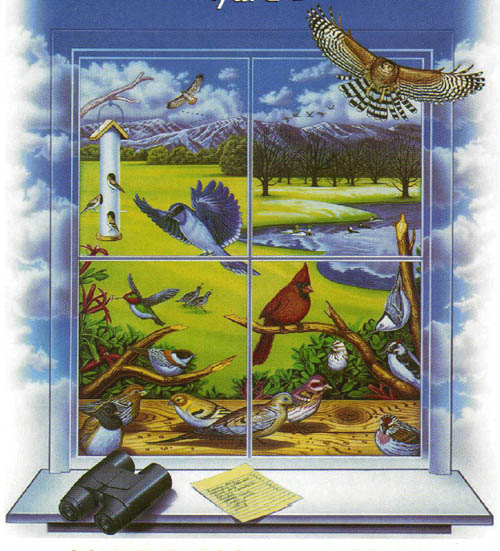
With this type of winter the Great Backyard Bird Count is more important than ever. This year the free count is from February 16 through the 19h, and we encourage everyone to participate. The data collected by “citizen scientists” provides valuable information on the movements of birds during winter. Birds are very dynamic and constantly on the move looking for new food resources as others become depleted. This is a good reason to keep observant, looking for unusual birds at your feeders. Many rare bird sightings are reported by backyard bird watchers. These eruptive species, northern birds that drift south in winter looking for food, can create quite a bit of excitement when they appear. Visit BIRD COUNT for more information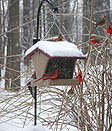
With the ice pack and deep snows covering almost all the natural vegetation, bird feeders become a vital source of supplemental foods for our backyard birds.This may be a good time to add another style of bird feeder to your existing backyard bird feeding program. Birds have specific feeding habits. Some will only feed on the ground. This is where ground bird feeders work well. It keeps seed off the ground and attracts Juncos, native sparrows, doves, and many others. Some birds prefer a large perching area to forage on such as hopper or hanging platform feeders. A variety of bird feeder styles will attract different birds. And just as important are the types of wild bird feeds offered in various feeders. This will also makes a difference in the kinds of birds you attract. Consult our “Backyard Bird Feeding Basics” handout at the Wild Bird Habitat Store, or “Backyard Bird Feeding 101” on-line at wildbirdhabitatstore.com. Or just ask our staff the next time you stop by any Wild Bird Habitat Store.
Another resource that is essential for birds is grit, a fine, gravel rock, since birds do not have teeth to grind their food. Some form of grit is needed for birds to digest their food. The grit will sit in their crop and grind the seeds and other foods they consume. Coarse sand or fine gravel works well as does crushed egg shells. That is why you will often find Quail and Pheasant, as well as many song birds, near gravel roads in rural areas. At Wild Bird Habitat we carry a “granite grit” also call “chic-grit” that is specially ground for birds and is better than sand. The grit can be mixed in with the bird feed. A little goes a long way. Or it can be placed out separate from the food in any accessible location.
An additional key resource required for the survival of birds is water. Open fresh water can become rare during cold weather. Birds can fly in search of 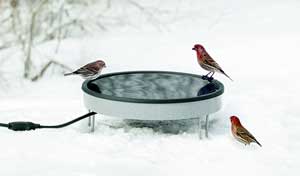 water. They could eat snow. But both these activities use valuable energy which must be replaced by eating more protein to survive through the cold night. While birds may have multiple food sources to wander around to, fresh open water can be hard to find. We have a large assortment of heated bird baths, or bird bath heaters for your existing bird bath. There is still a lot of winter left when water will be scarce.
water. They could eat snow. But both these activities use valuable energy which must be replaced by eating more protein to survive through the cold night. While birds may have multiple food sources to wander around to, fresh open water can be hard to find. We have a large assortment of heated bird baths, or bird bath heaters for your existing bird bath. There is still a lot of winter left when water will be scarce.
American Goldfinches are plentiful again this year, although we have yet to receive any reports about Pine Siskin arriving. They too were very numerous last year. They must have found plenty of food resources to the north where they range. I have an easy 30 to 40 Goldfinch that arrived at my feeders just prior to Thanksgiving. Folks in the country did not see them flocking to thistle feeders until the Christmas snowstorm. That was when the prairie seeds and other food stuffs were buried.
The Goldfinches we have now are primarily the northern population as many of our resident Goldfinch drift south in the late fall. They will return the first of March, doubling the numbers of finch we enjoy. By then the males will begin to show their bright “canary” yellow breeding plumage. The northern birds will remain till early May when they will follow the dandelion bloom back to their nesting territory, leaving us for the summer with our resident population.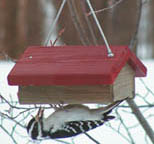
As always, suet will be a prime target for woodpeckers. I am often asked if suet will get rancid and spoil. Raw suet, or beef fat, from the butcher can spoil, especially in warmer weather. It is best to use commercially rendered suet found in Wild Bird Habitat’s suet cakes, plugs, and balls. The beef fat is rendered by boiling. This kills any bacteria that could form otherwise. Some people have seen Carolina Wrens, nuthatches, Brown Creepers, and Chickadees at their suet feeders. All these birds will continue to enjoy the high energy of suet through the winter months. They will even consume more during the nesting season. This makes suet a great year round product.
Peanuts are another great source of protein for birds. Red-bellied Woodpeckers almost prefer peanuts over suet. It is the oils in the seeds they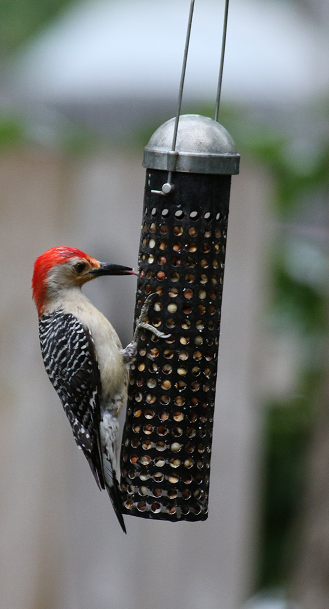 eat that provide the protein and carbohydrates to increase energy levels. This is why quality wild bird feeds are so attractive to the birds. They can identify which seeds will meet their needs, and the food we put in our bird feeders are all high in oil content. This is also the reason inferior wild bird seed mixes with wheat, Milo, red-millet and “assorted grain products” create so much uneaten waste on the ground.
eat that provide the protein and carbohydrates to increase energy levels. This is why quality wild bird feeds are so attractive to the birds. They can identify which seeds will meet their needs, and the food we put in our bird feeders are all high in oil content. This is also the reason inferior wild bird seed mixes with wheat, Milo, red-millet and “assorted grain products” create so much uneaten waste on the ground.
We are only a few weeks into winter and snow has already fallen with temperatures plummeting to sub-zero. Even if we have a late winter thaw, most the natural foods that were available for birds will have been destroyed. So keep your bird feeders filled, enjoy the Great Backyard Bird Count, and keep an eye out for any new birds showing up. Feel free to give us a call at Wild Bird Habitat and let us know. Backyard bird feeding! It’s beneficial for the birds, and enjoyable for us.
Good bird watching to you all.
